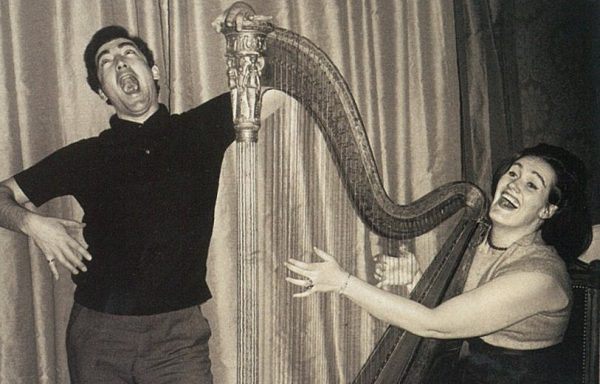
As we prepare to celebrate 25 years of the The Joan we’ve taken some time to mine the archives and gathered some facts about our much-loved centre (and Dame Joan herself):
- The Joan was designed by acclaimed architect Phillip Cox, who also designed Sydney Football Stadium, the Australian National Maritime Museum and Melbourne Park Tennis Centre.
- The Joan is the only cultural centre in the world to be named after Australia’s most famous opera diva – Dame Joan Sutherland.
- In 2006, a $14 million building upgrade funded by Penrith City Council and the NSW Government was completed.
- There are 3 performances spaces in the Joan – the 660 Richard Bonynge Concert Hall, the 375 seat Q Theatre and the 90 seat Allan Mullins Studio, as well as 27 teaching rooms.
- Dame Joan Alston Sutherland, OM, AC, DBE (born 7 November 1926, died 10 October 2010) is an Australian dramatic coloratura soprano noted for her contribution in the renaissance of the bel canto repertoire in the late 1950s and 1960s.
- One of the most remarkable female opera singers of the 20th century, Dame Joan was dubbed La Stupenda by a La Fenice audience in 1960 after an Alcina performance. She possessed a voice of beauty and power, combining extraordinary agility, accurate intonation, a splendid trill and a tremendous upper register, although music critics often complained about the imprecision of her diction.
- Joan Sutherland’s friend Luciano Pavarotti once called Sutherland the “Voice of the Century”, while Montserrat Caballé described the Australian’s voice as being like “heaven”.
- In 1953, Joan Sutherland sang her first leading role at the Royal Opera House, Amelia in Un ballo in maschera.
- In 1959, Joan Sutherland was invited to sing Lucia di Lammermoor at the Royal Opera House in a production conducted by Tullio Serafin and staged by Franco Zeffirelli. It was a breakthrough for Sutherland’s career, and, upon the completion of the famous Mad Scene, she had become a star.
- In 1960, Joan Sutherland recorded the album The Art of the Prima Donna, which remains today one of the most recommended opera albums ever recorded: the double LP set won the Grammy Award for Best Classical Performance – Vocal Soloist in 1962.
- In 1960, Joan Sutherland she sang a superb Alcina at La Fenice, Venice, where she was nicknamed La Stupenda (“The Stupendous One”). Sutherland would soon be praised as La Stupenda in newspapers around the world.
- In 1965, Sutherland toured Australia with the Sutherland-Williamson Opera Company. Accompanying her was a young tenor named Luciano Pavarotti, and the tour proved to be a major milestone in Pavarotti’s career. Every performance featuring Sutherland sold out.
- Joan Sutherland’s last performance was as Marguerite de Valois (Les Huguenots) at the Sydney Opera House in 1990, at the age of 64. Her last public appearance, however, took place in a gala performance of Die Fledermaus on New Year’s Eve, 1990, at Covent Garden, where she was accompanied by her colleagues Pavarotti and the mezzo-soprano Marilyn Horne.
- During her career and after, Sutherland received many honours and awards. In 1961, Sutherland was made a Commander of the Order of the British Empire. She was named the Australian of the Year in 1961. On 9 June 1975, Dame Joan was made a Companion of the Order of Australia. She was further elevated from Commander to Dame Commander on 30 December 1978. On 24 November 1991, the Queen bestowed on Dame Joan the Order of Merit.
29 Oct 2014
